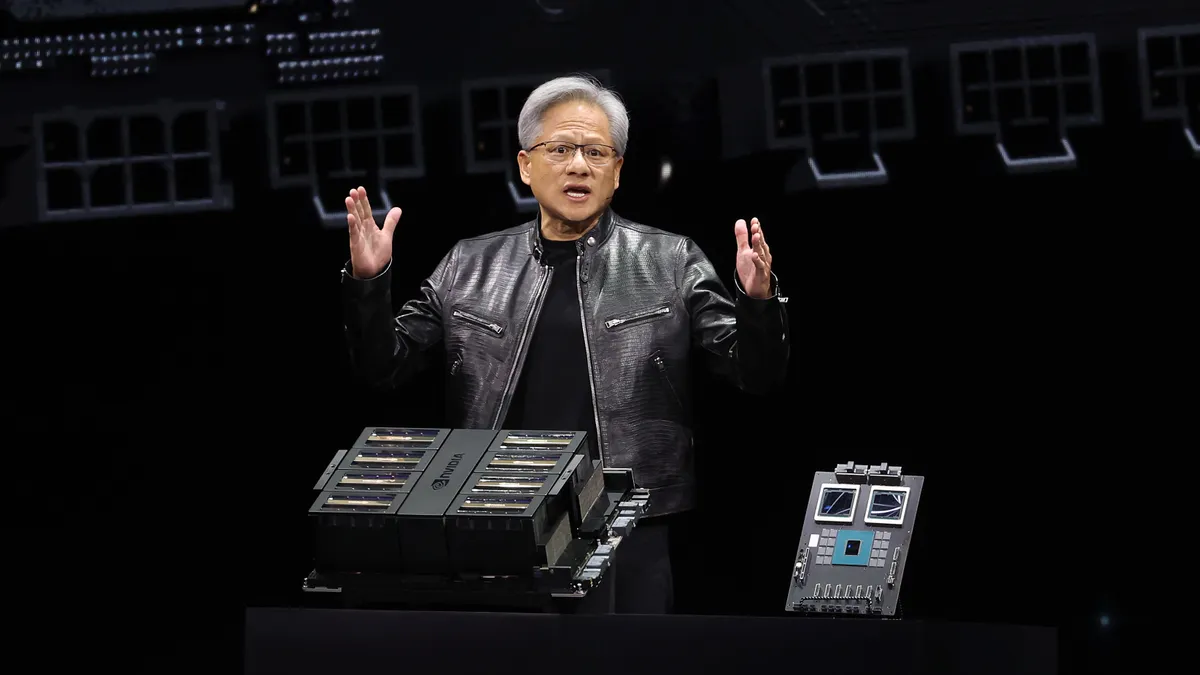Dive Brief:
- SAP will embed Nvidia generative AI services across its suite of cloud-based enterprise applications, including SAP Datasphere, SAP Business Technology Platform and RISE with SAP, the two companies announced Monday.
- The enterprise software provider and the chipmaker will jointly deploy more than 20 generative AI use cases to support digital transformation, automate enterprise resource planning, and assist human resource and customer support operations, the announcement said.
- “SAP is sitting on a gold mine of enterprise data that can be transformed into custom generative AI agents to help customers automate their businesses,” Nvidia Founder and CEO Jensen Huang said in the release.
Dive Insight:
Nvidia sits atop mountains of AI processing power and know-how, resources that have made the chipmaker an attractive ally for enterprise software and cloud providers.
In addition to expanding the SAP alliance, Nvidia deepened its hyperscaler partnerships at the Nvidia GTC technology conference in San Jose this week. Azure and Google Cloud plan to deploy the new Grace Blackwell AI computing platform, which Huang unveiled during a Monday keynote.
The SAP integrations leverage dozens of enterprise-grade Nvidia AI microservices built into the Nvidia CUDA developer platform and are optimized for data processing, model customization, inference, retrieval-augmented generation and guardrails.
“We realized we needed to have these composable microservices so that you didn't have to take the whole platform kit and caboodle,” Kari Briski, VP of AI software at Nvidia, told CIO Dive. “We focused on inference to start with because that was low hanging fruit for retrieval-augmented generation,” she added.
The microservices let users fine-tune models by Nvidia, Cohere, Google, Hugging Face, Meta, Stability AI and other AI companies in cloud or on-prem, the company said.
“Customers are really struggling because there's a new model coming out almost every single day,” said Briski.
The microservices ecosystem gives Nvidia a framework for pre-deployment model optimization.
Briski points to the release of Google’s Gemma models last month as an example of the microservices process.
“We worked with Google for a month prior to releasing that model to get it optimized so that you can just pick up a model and it will work in your environment,” Briski said.














